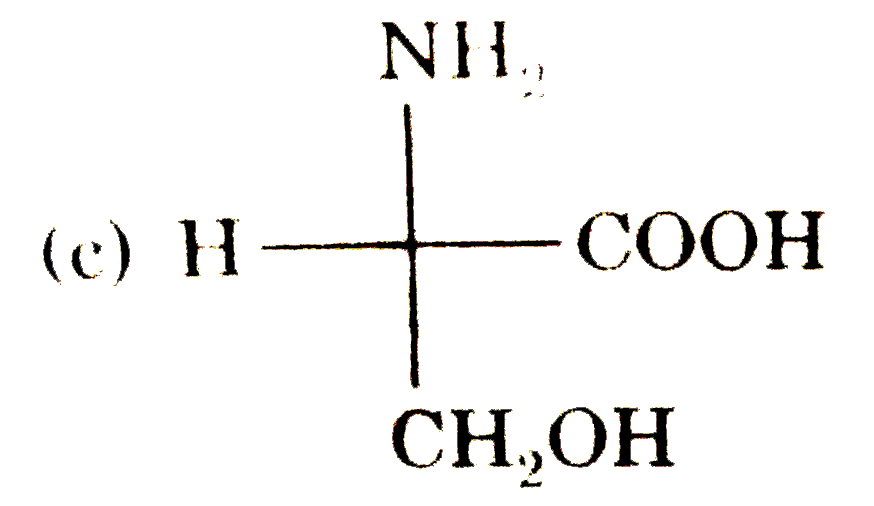A tripeptide on complete hydrolysis gives glycine, alanine, and phenylanine,using three-letter symbols write down the possible sequences of the tripeptide.
When glycine, alanine and phenylalanien react together, in all 18 tripeptide are formed. If , however , each of three amino acids is used only once , six tripeptides are possible. Using three and one letter abbreviations for each amino acid, their structures and names are given below : 
Topper's Solved these Questions
- BIOMOLECULES BOOK - PRADEEPCHAPTER - BIOMOLECULES EXERCISE - Higher order Thinking skills (Questions and problems with answers/solution(Hots Questions) P.2
1 Video
- BIOMOLECULES BOOK - PRADEEPCHAPTER - BIOMOLECULES EXERCISE - Higher order Thinking skills (Questions and problems with answers/solution(Hots Questions) P.3
1 Video
- BIOMOLECULES BOOK - PRADEEPCHAPTER - BIOMOLECULES EXERCISE - Higher order Thinking skills (Hots Problems )
1 Video
- APPENDIXBOOK - PRADEEPCHAPTER - APPENDIXEXERCISE - MODEL TEST PAPER <br> (Section C )
15 Videos
- CHEMICAL KINETICSBOOK - PRADEEPCHAPTER - CHEMICAL KINETICSEXERCISE - ADVANCED PROBLEMS FOR COMPETITIONS
14 Videos
Similar Questions
A tripeptide oon complete hydrolysis gives glycine, alanine, and phenylanine,using three-letter symbols write down the possible sequences of the tripeptide.
View SolutionA decapeptide (Mol. Wt. 769) on complete hydrolysis gives glycine (Mol. Wt. 75), alanine and phenylalanine.
Glycine contributes 47.0% to the total weight of the hydrolysed products. The number of glycine units. Present in the decapeptide is.
View Solution
Knowledge Check
A decapiptide (Mol. Wt. 796) on complete hydrolysis gives glycine (Mol. Wt. 75), alanine and phenylalanine. Glycine contributes 47.0% to the total weight of the hydrolysed product. The number of glycine units present in the decapeptide is
A6B5C4D3A tripeptide contains glycine, alanine and serine. How many different sequences are possible ?
A27B8C6D9A tripeptide is written as Glycine -Alanine -Glycine .
A B
B C
C D
D
A decapeptide (Mol. Wt. 769) on complete hydrolysis gives glycine (Mol. Wt. 75), alanine and phenylalanine.
Glycine contributes 47.0% to the total weight of the hydrolysed products. The number of glycine units. Present in the decapeptide is.
View SolutionA decapeptide (Mol. Wt. 769) on complete hydrolysis gives glycine (Mol. Wt. 75), alanine and phenylalanine.
Glycine contributes 47.0% to the total weight of the hydrolysed products. The number of glycine units. Present in the decapeptide is.
View SolutionA decapeptide (Molecular weight 796) on complete hydrolysis gives glycine (Molecular weight 75), alanine and phenylanine. Glycine contributes 47.0 % to the total weight of the hydrolysed products. The number of glycine units present in the decapeptide is
View SolutionA tetrapeptide is made of naturally occurring alanine, serine, glycine and valine. How many total numbers of possible sequences of the tetrapeptide is possible if the ECterminal amino acid is alanine?
View SolutionTetrapeptide is made of naturally occuring alanine , serine, glycine and valine . If the C-terminal amino acid is alanine and the N-terminal amino acid is chiral , the number of possible sequences of the tetrapeptide is
View Solution